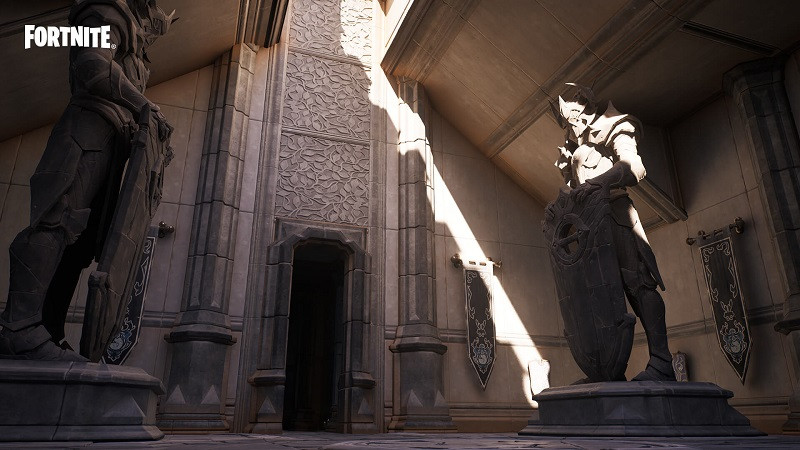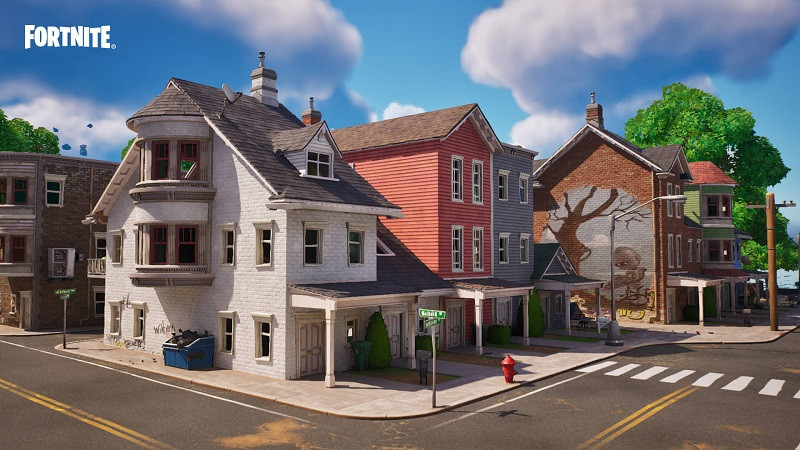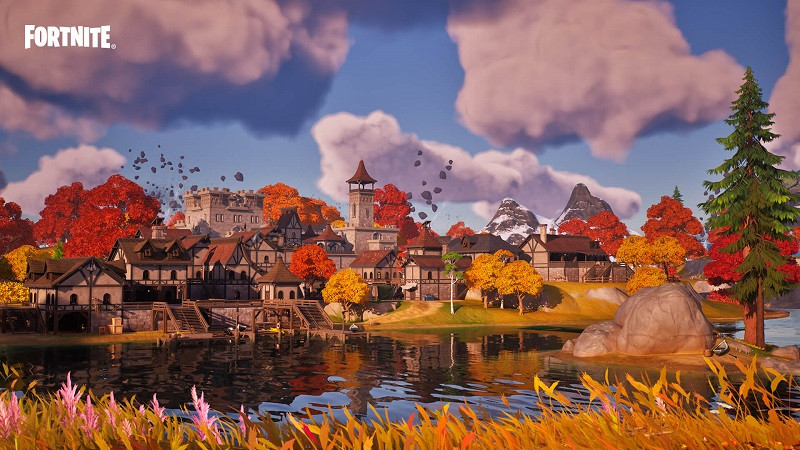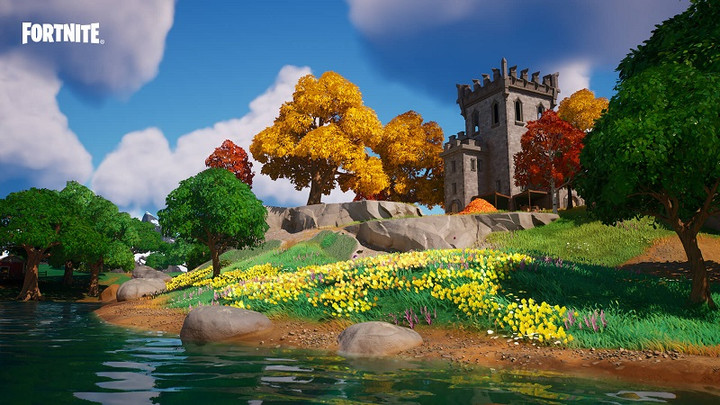Epic Games unleashed Fortnite Chapter 4 Season 1 with a new map, great new weapons, a shiny new battle pass, and much more. The cosmetics players can get aren't the only shiny new additions, as the next-gen experience is truly here with Unreal Engine 5.1 features.
This article explains all the new Unreal Engine 5.1 graphics features in Fortnite Chapter 4 Season 1 and outlines the new PC settings so you know exactly how to make the ever-popular battle royale as pretty as possible.
Fortnite Unreal Engine 5.1 Platforms

The Unreal Engine 5.1 graphics features are not available on PS4 and Xbox One consoles, nor is it available on the Nintendo Switch or mobile devices. This is expected, as the hardware requirements are quite high.
The Unreal Engine 5.1 features are available on PlayStation 5, Xbox Series X|S, PC, and via Cloud gaming.
Fortnite UE5.1 Features Explained

Bringing what can only be described as an "unprecedented level of detail" to the Fortnite island, the Unreal Engine 5.1 features offer a massive leap in visual fidelity. The four main next-gen features are Nanite, Lumen, Virtual Shadow Maps, and Temporal Super Resolution (TSR).
For most, these names mean absolutely nothing without a proper explanation. Below, you can read the official descriptions from Epic Games for these Fortnite next-gen graphics features.
Nanite in Fortnite:
Nanite provides highly-detailed architectural geometry. Specifically, buildings are rendered from millions of polygons in real time, and each brick, stone, wood plank, and wall trim is modeled.
Natural landscapes are highly-detailed too. Individual trees have around 300,000 polygons, and each stone, flower, and blade of grass is modeled.
Lumen in Fortnite:
Lumen reflections provide high-quality ray-traced reflections on glossy materials and water.
Also, Lumen provides real-time global illumination at 60 FPS. You’ll see beautiful interior spaces with bounce lighting, plus characters reacting to the lighting of their surroundings. (For example, red rugs may bounce red light onto your Outfit.) Also, Outfits that have emissive (a.k.a. glowing) qualities will scatter light on nearby objects and surfaces.
Virtual Shadow Maps in Fortnite:
Virtual Shadow Maps allow for highly detailed shadowing. Each brick, leaf, and modeled detail will cast a shadow, and character self-shadowing is extremely accurate. This means that things like hats and other small details on characters will also cast shadows.
Temporal Super Resolution (TSR) in Fortnite:
Temporal Super Resolution is an upgrade over Temporal Anti-Aliasing in Fortnite, and allows for high-quality visuals at a high framerate.
Please note that Nanite, Lumen, and Virtual Shadow Maps are not currently in creator-made islands or Save the World. However, Temporal Super Resolution is.
PC Settings for Next-Gen Fortnite

PC gamers will notice a tonne of settings changes and additions due to the addition of these next-gen Unreal Engine 5.1 features in Fortnite. Check out the complete list of PC settings that have moved or changed below.
“DISPLAY” SECTION OF THE VIDEO SETTINGS
“Rendering Mode” Setting
-
Moved from the “Advanced Graphics” section to the “Display” section.
-
DirectX 12 is now the default rendering mode on PCs with certain higher-end GPUs.
-
The "Performance" rendering mode is no longer in beta and is now called "Performance - Lower Graphical Fidelity."
“VSync” Setting
-
Moved from the “Advanced Graphics” section to the “Display” section.
“GRAPHICS” SECTION OF THE VIDEO SETTINGS
“Motion Blur” Setting
-
Moved from the “Advanced Graphics” section to the “Graphics” section.
-
Is now off by default.
-
“Auto-Set Quality” in the “Graphics Quality section” will never turn this setting on, but it may turn it off on a lower-spec PC.
“GRAPHICS QUALITY” SECTION OF THE VIDEO SETTINGS
“Temporal Super Resolution” Setting
-
This settings has the following options:
-
Recommended (default): Selects the 3D resolution based on what works best for your display resolution.
-
Performance: Prioritizes frame rate over final image quality by rendering at a lower resolution.
-
Balanced: Balances the image quality versus performance.
-
Quality: Prioritizes final image quality over performance by rendering at a higher resolution.
-
Native: Allows you to render frames at the native display resolution at the expense of performance.
-
Custom: Allows you to customize the 3D resolution on a slider.
-
“Nanite Virtualized Geometry” Setting
-
Only available if the rendering mode is set to DirectX 12.
-
If “Nanite Virtualized Geometry” is turned on, Nanite will be enabled.
-
Note: When Nanite is enabled, the “Shadows” setting is renamed to “Virtual Shadows.”
-
-
Defaults to on when the “Quality Presets” setting is set to High or Epic.
-
Please note that this setting cannot be changed mid-match.
“Global Illumination” Setting
-
Enables Lumen Global Illumination when set to High or Epic.
-
When Nanite is disabled, this setting has two options: Only Off, and Ambient Occlusion. (Ambient Occlusion = Lower quality ambient lighting with darkened corners.)
-
When Nanite is enabled, two more options are added: Lumen High, and Lumen Epic.
-
Please note that this setting cannot be changed mid-match.
“Reflections” Setting
-
Enables Lumen Reflections when set to High or Epic.
-
When Nanite is disabled, this setting has two options: Only Off, and Screen Space. (Screen Space = Calculates reflections based only on what is currently shown on the screen.)
-
When Nanite is enabled, two more options are added: Lumen High, and Lumen Epic.
“Hardware Ray Tracing” Setting
-
“Hardware Ray Tracing” makes it so that Lumen Global Illumination and Lumen Reflections use hardware-accelerated ray tracing. (The “Hardware Ray Tracing” setting in the “Graphics Quality” section has replaced the “Ray Tracing” section.)
-
Is defaulted to off.
-
To turn “Hardware Ray Tracing” on:
-
Nanite must be enabled. (In other words, “Nanite Virtualized Geometry” is turned on.)
-
Either “Global Illumination” or “Reflections” must be set to Lumen High or Lumen Epic.
-
-
Turning this setting on or off requires a game restart to take effect.
“Auto-Set Quality”
-
Selecting “Auto-Set Quality” sets most Graphics Quality settings to either the Low, Medium, High, or Epic options, and also sets options for the “Global Illumination” and “Reflections” settings.
-
Sets the “Anti-Aliasing & Super Resolution” setting to either the TSR Low, TSR Medium, TSR High, or TSR Epic options, and the “Temporal Super Resolution” setting to Recommended.
At the time of writing, DLSS on PC is disabled as Epic Games is testing this feature to ensure it works properly with the newly added Unreal Engine 5.1 features.
So there you have it, all the next-gen Fortnite graphics features and explanations of each one that have been unleashed following the Fortnite Chapter 4 Season 1 update.
In case you missed it, check out the awesome Fortnite Chapter 4 Season 1 launch trailer below.
For more Fortnite news, be sure to check out our dedicated section or some of our Guides & Tutorials just below:
Fortnite Guides - All Fortnite Redeem Codes | QR Code & All Object Coordinates | All Fortnite Twitch Drop Rewards| How To Make Your Own Fortnite Skin | New Map & Points Of Interest | New Weapons & Items | Battle Pass Rewards | All Achievements/Legacies |
Fortnite Events - Fortnite Winterfest 2022 |
The Best Fortnite Creative Codes - Best Edit Course Codes | Best Prop Hunt Codes | Best Zombie Map Codes
Featured image courtesy of Epic Games.

 No ads, our video library,
No ads, our video library,

